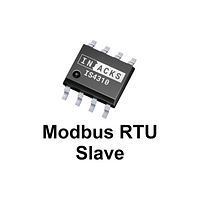IS4310 Evaluation Board: Modbus RS485 Slave
Sold by Inacks store
$17.76
No tax for United States [change]
The Kappa4310Ard is an evaluation board for the IS4310 Modbus chip. It enables engineers to easily evaluate the IS4310 without the need for soldering or developing their own prototype—offering a ready-to-use solution. The board features an RGB LED and a potentiometer to simulate an actuator and a sensor.
Designed as a shield with the Arduino form factor, the Kappa4310Ard benefits from its widespread popularity, ensuring compatibility with various microcontroller boards, including Arduino and STM32 Nucleo Boards, among others. The board features an RS485 electrical interface and includes two daisy-chained RJ45 connectors for seamless integration.
The IS4310 is an ideal solution for ensuring Modbus protocol timing constraints, reducing CPU load, and eliminating the need for dedicated pins. It includes 500 Holding Registers for engineers to use and supports Function Codes 3 (0x03), 6 (0x06), and 16 (0x10).
Links to code and documentation
Documentation (inacks.gitbook.io)
Shipping policy
We ship all products from Barcelona via Correos within 1 to 3 business days, with a tracking number.
Delivery usually takes a few days to a week within Europe, and around one week for the rest of the world.
The seller
Our chips help you cut firmware development time and costs related to protocol implementation, so you can bring products to market faster.
If you need a specific communication protocol, contact us.
.jpg)
.jpg)
.jpg)
.jpg)

